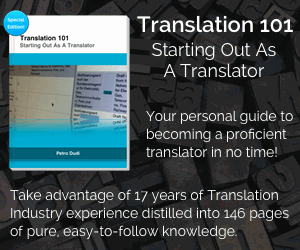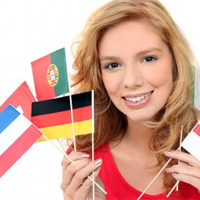Quality Assurance for the Freelance Translator
Quality Assurance (QA) in translation can be defined as all the systematic and planned actions established to ensure translation services adhere to client requirements and meet the expectations of the target market. The translation service provider bears the responsibility of establishing the methodologies and processes necessary to meet customer quality requirements.
Language and Technical Quality:
To ensure the highest quality translation, you should only accept translation jobs where you are a native speaker of the target language and possess professional expertise in the subject matter.
Having a “near-native fluency” in the target language may not be sufficient to accurately relay cultural idioms or inherent language subtleties and nuances. Additionally, appropriate educational certifications and professional credentials are essential for technical translations.
As part of your language and technical quality strategy, make sure your translation goes through editing and proof-reading stages, besides the translation stage. After you’ve completed your translation, have it reviewed by an editor to verify its accuracy. This final, edited version should then be proofread for the consistency, fluency and integrity of its content.
Review and Prepare the Source Text
Any mistakes, omissions or inaccuracy in the source text will inevitably be repeated in the target language, unless an initial review is carried out. It is essential that you analyze the linguistic and technical quality of the source text and make any necessary modifications – be they simple or extensive – to incorporate quality. Make sure you contact your client and advise them of any initial review you deem necessary.
Ask Where and Why
Culture is an integral part of language, so make sure you know your target audience.
Ask yourself the two-simple questions of Where and Why on every single translation project your work on. Ask yourself “why translate this text”: is it to educate, persuade or sell? The objective of each translation project will determine the language register, as well as the translation style you will use.
Another important question to ask is “Where to translate”? Am I translating to a French audience in France or in Quebec? Is the translation intended for professional PC expert or the casual user? An understanding of the target audience of your translation, as well as a thorough knowledge of regional as well as group-specific language variations will eliminate the risk of any misunderstanding and will assure the quality and integrity of your translation.
Visual and Functional Quality
It is essential to verify the quality of the presentation and functionality of the translation to make sure it accurately reflects the quality of the source material.
Visual checks include the verification of typography, page flow and cross references. Functional checks test the functionality and output features of the translation, be it documentation, software or website. These may include the duplication of the functionality of the source software, compatibility with respective platforms and hardware, and correct output, such as publishing and printing standards.
Establishing translation quality assurance processes does not only yield increased quality but ultimately facilitates successful translation projects and reduces turnaround times as future translation projects come into the mix.




